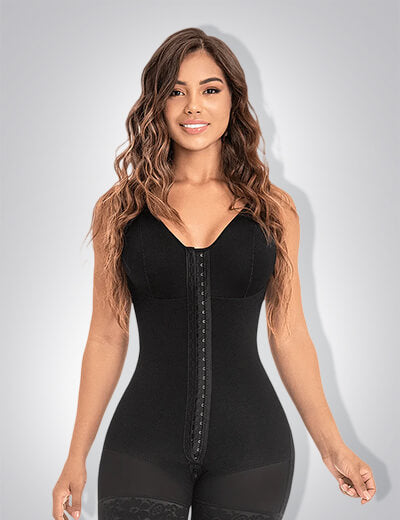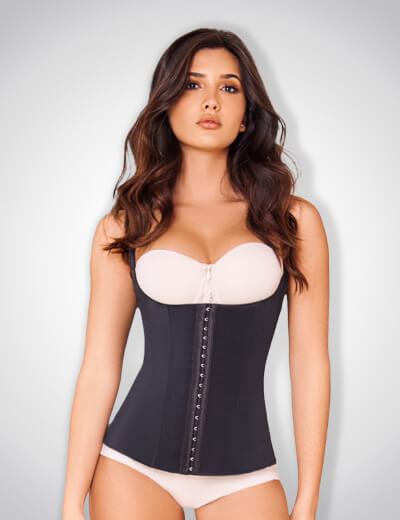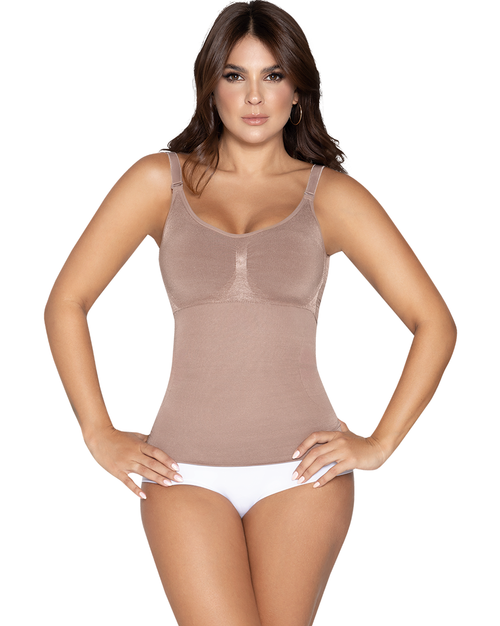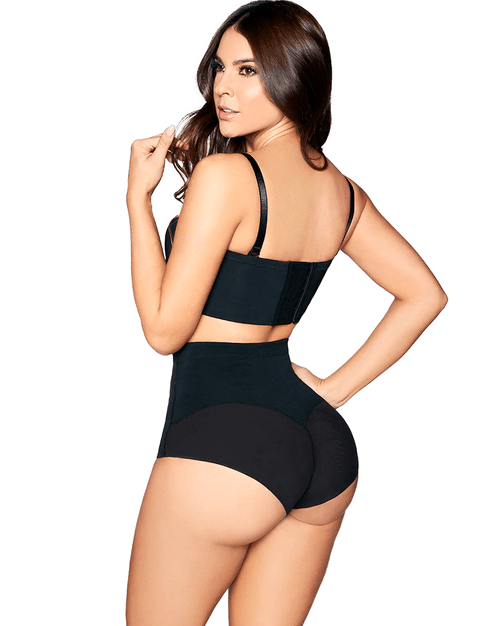Waist Trainers
Filters
Sort Best selling
-
Jackie London Colombian Waist Trainer - 5030 





 -25%
-25%Jackie London Colombian Waist Trainer - 5030
Regular price $73.15 Sale price $55.00Jackie London Colombian Waist Trainer - 5030
2 reviews
Sale price $55.00 Regular price $73.15 -
Jackie London Waist Trainer With Wide Straps - 5020 






 -25%
-25%Jackie London Waist Trainer With Wide Straps - 5020
Regular price $93.10 Sale price $70.00Jackie London Waist Trainer With Wide Straps - 5020
6 reviews
Sale price $70.00 Regular price $93.10 -
Equilibrium Sport Pants Plus Waist Trainer All In One - Capri Style 
 -17%
-17%Equilibrium Sport Pants Plus Waist Trainer All In One - Capri Style
Regular price $120.00 Sale price $100.00Equilibrium Sport Pants Plus Waist Trainer All In One - Capri Style
12 reviews
Sale price $100.00 Regular price $120.00 -
Equilibrium Sport Pants Plus Waist Trainer All In One - Skinny Style 
 -22%
-22%Equilibrium Sport Pants Plus Waist Trainer All In One - Skinny Style
Regular price $135.66 Sale price $106.00Equilibrium Sport Pants Plus Waist Trainer All In One - Skinny Style
1 reviews
Sale price $106.00 Regular price $135.66 -
Fajas Salome Waist Cincher Trainer for Women 




 -12%
-12%Fajas Salome Waist Cincher Trainer for Women
Regular price $74.21 Sale price $65.10Fajas Salome Waist Cincher Trainer for Women
4 reviews
Sale price $65.10 Regular price $74.21 -
Fajas Salome Waist Cincher Trainer Shaper Vest for Women - Beige/Black 



 -12%
-12%Fajas Salome Waist Cincher Trainer Shaper Vest for Women - Beige/Black
Regular price $86.53 Sale price $75.90Fajas Salome Waist Cincher Trainer Shaper Vest for Women - Beige/Black
5 reviews
Sale price $75.90 Regular price $86.53 -
Romanza Waist Training Cincher 

 -9%
-9%Romanza Waist Training Cincher
Regular price $51.87 Sale price $47.15Romanza Waist Training Cincher
1 reviews
Sale price $47.15 Regular price $51.87 -
Jackie London Powernet Waist Trainer Strapless - 5035 




 -25%
-25%Jackie London Powernet Waist Trainer Strapless - 5035
Regular price $79.80 Sale price $60.00Jackie London Powernet Waist Trainer Strapless - 5035
2 reviews
Sale price $60.00 Regular price $79.80 -
Fajas M&D Waist Trainer Belt Neoprene Sweat Wrap 

 -17%
-17%Fajas M&D Waist Trainer Belt Neoprene Sweat Wrap
Regular price $72.00 Sale price $60.00Fajas M&D Waist Trainer Belt Neoprene Sweat Wrap
1 reviews
Sale price $60.00 Regular price $72.00 -
Rago Waist Trainer / Girdle With Garters Firm Shaping Black 








Rago Waist Trainer / Girdle With Garters Firm Shaping Black
$58.00Rago Waist Trainer / Girdle With Garters Firm Shaping Black
1 reviews
$58.00 -
Jackie London Colombian Waist Trainer With Wide Straps - 5020 

 -25%
-25%Jackie London Colombian Waist Trainer With Wide Straps - 5020
Regular price $93.10 Sale price $70.00Jackie London Colombian Waist Trainer With Wide Straps - 5020
Sale price $70.00 Regular price $93.10 -
Fajas M & D Waist Trainer Cincher for Women 




 -11%
-11%Fajas M & D Waist Trainer Cincher for Women
Regular price $114.00 Sale price $100.99Fajas M & D Waist Trainer Cincher for Women
Sale price $100.99 Regular price $114.00 -
Curveez Long Latex Waist Trainer 








Curveez Long Latex Waist Trainer
$50.00Curveez Long Latex Waist Trainer
10 reviews
$50.00 -
Fajas Salome Waist Cincher Trainer Shaper Vest for Women - Black/Beige 


 -12%
-12%Fajas Salome Waist Cincher Trainer Shaper Vest for Women - Black/Beige
Regular price $86.53 Sale price $75.90Fajas Salome Waist Cincher Trainer Shaper Vest for Women - Black/Beige
1 reviews
Sale price $75.90 Regular price $86.53 -
Equilibrium Latex Waist Trainer Cincher Vest 



 -29%
-29%Equilibrium Latex Waist Trainer Cincher Vest
Regular price $122.40 Sale price $87.00Equilibrium Latex Waist Trainer Cincher Vest
Sale price $87.00 Regular price $122.40 -
Equilibrium Firm Compression Girdle Waist Trainer Cincher 

 -18%
-18%Equilibrium Firm Compression Girdle Waist Trainer Cincher
Regular price $80.00 Sale price $66.00Equilibrium Firm Compression Girdle Waist Trainer Cincher
Sale price $66.00 Regular price $80.00 -
Equilibrium Sport Latex Waist Trainer Cincher 


 -23%
-23%Equilibrium Sport Latex Waist Trainer Cincher
Regular price $88.66 Sale price $68.00Equilibrium Sport Latex Waist Trainer Cincher
2 reviews
Sale price $68.00 Regular price $88.66 -
Laty Rose Latex Waist Trainer Cincher 3 Rows Of Hooks 






 -14%
-14%Laty Rose Latex Waist Trainer Cincher 3 Rows Of Hooks
Regular price $58.70 Sale price $50.60Laty Rose Latex Waist Trainer Cincher 3 Rows Of Hooks
1 reviews
Sale price $50.60 Regular price $58.70 -
Equilibrium Eqfit Unisex Waist Belt Binder 



 -35%
-35%Equilibrium Eqfit Unisex Waist Belt Binder
Regular price $92.96 Sale price $60.00Equilibrium Eqfit Unisex Waist Belt Binder
5 reviews
Sale price $60.00 Regular price $92.96 -
Equilibrium EQfit Unisex Waist Belt Binder - D6005 Long 







 -39%
-39%Equilibrium EQfit Unisex Waist Belt Binder - D6005 Long
Regular price $91.52 Sale price $56.00Equilibrium EQfit Unisex Waist Belt Binder - D6005 Long
Sale price $56.00 Regular price $91.52 -
Diane & Geordi Women's Shapewear Waist Cincher Open Bust Waist Trainer 

 -13%
-13%Diane & Geordi Women's Shapewear Waist Cincher Open Bust Waist Trainer
Regular price $68.01 Sale price $59.14Diane & Geordi Women's Shapewear Waist Cincher Open Bust Waist Trainer
Sale price $59.14 Regular price $68.01 -
Equilibrium Latex Waist Trainer Cincher- Short Torso 





 -40%
-40%Equilibrium Latex Waist Trainer Cincher- Short Torso
Regular price $113.46 Sale price $68.00Equilibrium Latex Waist Trainer Cincher- Short Torso
1 reviews
Sale price $68.00 Regular price $113.46 -
Jackie London Colombian Waist Trainer Purple - 5030 
 -25%
-25%Jackie London Colombian Waist Trainer Purple - 5030
Regular price $73.15 Sale price $55.00Jackie London Colombian Waist Trainer Purple - 5030
Sale price $55.00 Regular price $73.15 -
Equilibrium Eqfit Men's Waist Belt Binder 



 -39%
-39%Equilibrium Eqfit Men's Waist Belt Binder
Regular price $97.92 Sale price $60.00Equilibrium Eqfit Men's Waist Belt Binder
Sale price $60.00 Regular price $97.92
Discover the Best Waist Trainers for Women
Looking to achieve a slimmer waistline and enhance your curves? Our collection of shapewear waist trainers is designed to provide both style and functionality, helping you feel confident every day. Whether you're starting your waist training journey or looking for the best waist trainer for women, we have something perfect for you. With high-quality materials and expert craftsmanship, our shapewear waist trainers offer comfort, durability, and results.
What Does a Waist Trainer Do?
A waist trainer helps shape your waistline by applying firm compression around your midsection. It can enhance your posture, provide back support, and create a flattering hourglass silhouette. Many women incorporate it with shapewear as part of their fitness routine or for postpartum recovery. The benefits of a faja waist trainer include improved confidence, better posture, and a sleek figure under any outfit, making it a versatile addition to your wardrobe.
Features of Our Waist Trainers
Our waist trainers for women are crafted to deliver both comfort and performance. Some key features include:
High-quality materials for long-lasting wear.
Adjustable hooks and straps for a customized fit.
Flexible boning to enhance posture and support.
Lightweight design, ideal for daily use or workouts.
Whether you're searching for the best waist trainer for working out or wearing underclothes, you'll find what you need here.
Why Choose a Faja Waist Trainer?
The shapewear faja waist trainer is a popular choice for women seeking exceptional results. It combines traditional shapewear benefits with a focus on waist definition. The faja design offers enhanced compression, making it one of the best waist trainers for women who want fast, visible results.
How to Choose the Best Waist Trainer for Women
Not all waist trainers are the same, so it’s important to select one that matches your goals. When choosing the best waist trainer, consider the following:
Compression level: Higher compression for intense training or lighter options for daily wear.
Material: Breathable fabrics like latex or cotton blends for comfort.
Fit: Ensure an adjustable design for a snug, customized fit.
Finding the right waist trainer for women ensures you’ll enjoy both comfort and results.
Waist Training Tips for Beginners
If you’re new to waist training, start gradually to let your body adapt. Wear your shapewear waist trainer for a few hours daily and combine it with a balanced diet and exercise for the best results.
Do not overtighten to avoid discomfort.
Listen to your body and take breaks as needed.
Stay consistent to see long-term improvements.
FAQs About Waist Trainers
1. What does a waist trainer do?
A waist trainer helps to shape the waistline, improve posture, and support your back, creating a slimmer and more defined appearance.
2. Can I wear a waist trainer every day?
Yes, many women use everyday waist trainers for consistent results. Start by wearing it for a few hours daily and gradually increase usage.
3. What is the best waist trainer for women?
The best waist trainer depends on your needs. Look for options with adjustable straps, breathable materials, and flexible boning for comfort and effectiveness.
Enhance your confidence and achieve your dream silhouette with our top-quality waist trainers. Explore our collection now to find the perfect fit for your lifestyle!











































































































































